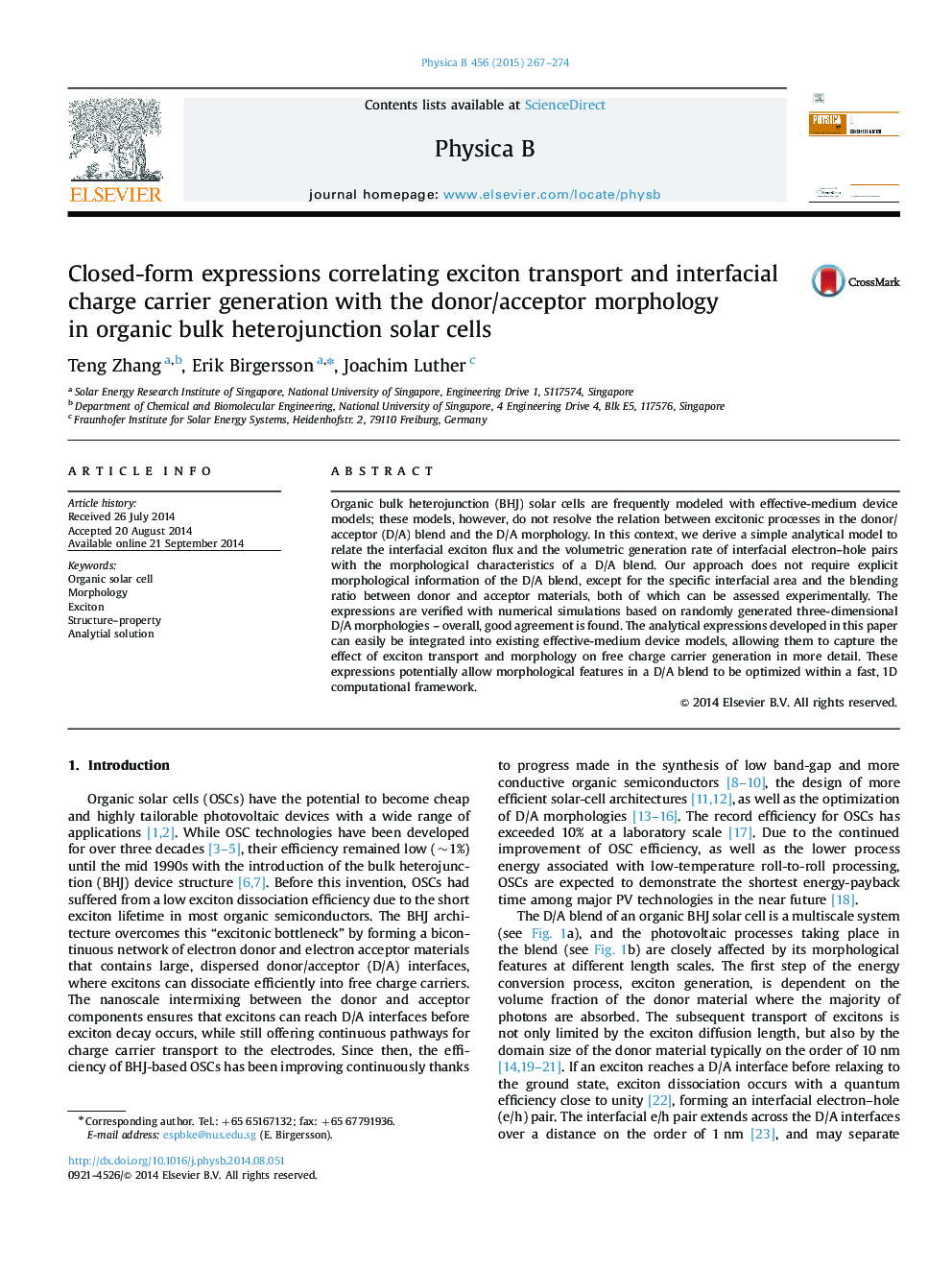| Article ID | Journal | Published Year | Pages | File Type |
|---|---|---|---|---|
| 1809315 | Physica B: Condensed Matter | 2015 | 8 Pages |
Organic bulk heterojunction (BHJ) solar cells are frequently modeled with effective-medium device models; these models, however, do not resolve the relation between excitonic processes in the donor/acceptor (D/A) blend and the D/A morphology. In this context, we derive a simple analytical model to relate the interfacial exciton flux and the volumetric generation rate of interfacial electron–hole pairs with the morphological characteristics of a D/A blend. Our approach does not require explicit morphological information of the D/A blend, except for the specific interfacial area and the blending ratio between donor and acceptor materials, both of which can be assessed experimentally. The expressions are verified with numerical simulations based on randomly generated three-dimensional D/A morphologies – overall, good agreement is found. The analytical expressions developed in this paper can easily be integrated into existing effective-medium device models, allowing them to capture the effect of exciton transport and morphology on free charge carrier generation in more detail. These expressions potentially allow morphological features in a D/A blend to be optimized within a fast, 1D computational framework.
